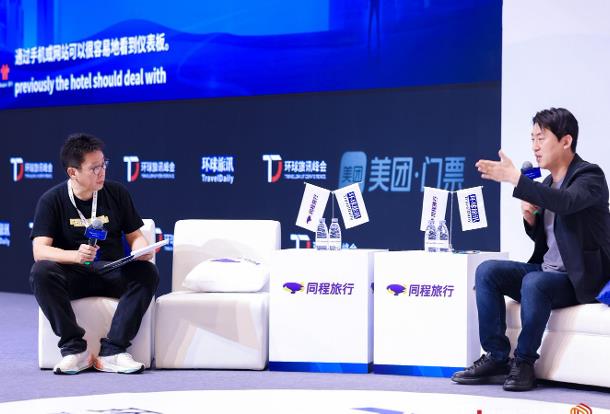ChinaTravelNews, Ritesh Gupta – As the world of airline merchandising evolves, featuring options from á la carte merchandising to dynamically packaging ancillary services, the role of online travel agencies (OTAs), too, has been under the scrutiny.
A lot is being introspected as far as the role of OTAs is concerned - How are OTAs looking to go beyond being price-centric? How are OTAs refining their e-commerce capabilities, for instance, relying on facial-recognition technology for rich media interactions like recommendations based on a user’s mood/ intent? Can OTAs hold edge over travel suppliers via the apt use of emerging technology such as voice search, digital assistant etc.?
Technology providers that work with OTA acknowledge their progress and believe a lot still needs to be done.
“Just as airlines have become better at merchandising their own products, OTAs are becoming true travel retailers and data is at the core of any retail business,” Sebastien Gibergues, VP, Online Travel Asia Pacific Region, Amadeus.
Understanding what travellers want
Other than offering choice and value, be it for competitive price or attractive bundles, OTAs also need to understand the intent as per the booking funnel.
Every aspect of business, right from analyzing the source of the traffic to what product to offer is becoming data-centric.
The combination of cloud computing, data and analytics, machine learning etc. is set to pave way for insights that can help the likes of OTAs in their key decision-making. Playing its part, Amadeus asserts that its flight search technology and engine is counting on machine learning algorithm (for relevancy) and instant response time.
“With our new AI (artificial intelligence)-based algorithm, we can train our engine to identify the most relevant flight options depending on the profile of the customer searching for this specific itinerary,” shared Gibergues, who was in Shanghai for TravelDaily Conference last month. He added that the user of flight search solutions “have noticed a major conversation rate boost, and this is only the beginning”. Gibergues mentioned that OTAs aren’t agencies anymore, rather they are online travel retailers (OTRs), and such AI approach needs to be applied across their product offerings. “We are still only just talking about flights and their associated ancillary services, but OTRs will need to apply these techniques across all their products and all their channels so that consumers can find exactly what they are looking for.”
When Amadeus asserts it has integrated merchandising into the search results, it means allowing search by bag allowance or showing fare families in results. Also, supporting mobile search, map views etc. for better user experience. For their part, established OTAs aren’t averse to investing in the travel e-commerce category, but are they going beyond just price-centric?
“As long as consumers remain price-centric, it will be the job of OTAs (and other online players) to deliver on this core expectation. However, optional services are becoming a big part of the final price of a ticket and this trend will continue for the foreseeable future. This means that the cheap price you may have selected on the first flight search result display page will most likely not be the price you will have to pay after you have upgraded to Premium Economy and added a couple of bags to cater for your family holiday requirements,” explained Gibergues.
He added, “This raises a valid question from the consumer: did I choose the right flight or was the other option that appeared more expensive initially a better deal? This will create the need for a “Flight Search Paradigm Shift” for OTAs who will have to rethink their search flow in order to help their customers answer this legitimate but complex question.”

Sebastien Gibergues, VP, Online Travel Asia Pacific Region, Amadeus
Chinese intermediaries leading the way
Gibergues praised Chinese companies for opening up new avenues for distribution.
On one hand, Fliggy as an “entry point” for the travel sector in the Alibaba ecosystem is letting travel brands to open “storefronts” on its platform, on the other the likes of WeChat and Meituan are also allowing foreign brands to take bookings on their platforms, respectively.
“China is showing the way in many areas when it comes to online travel, from content sourcing with platform plays like Ctrip and Fliggy to mobile user experience – which can only be matched by OTAs in India from my perspective - and payment solutions like Alipay. There are even new online channels emerging, whether it is on mobile (WeChat mini-programs) or live streaming platforms such as the Taobao Platform. These channels do not even yet exist in other parts of the world. Most importantly, I am always impressed to see how Chinese players, even when very large and successful, can keep their agility to develop new ideas and innovate - a very powerful combination,” said Gibergues.
From a business perspective, the two immediate business opportunities for OTAs Gibergues has observed are:
* Ride the airline merchandising trend that is coming to Asia, there is incremental value for everyone from consumers, OTAs and airlines.
* Look outside of China as many consumers around the world would like to enjoy the comprehensive travel experience delivered by Chinese online travel brands.
“Many Chinese OTAs have the ambition to become global travel brands, our main focus is supporting them with their international expansion plans. We can provide open system cloud-based travel technology for OTAs – not tomorrow or in five years, but today,” he said. Amadeus has been accentuating on the fact that it has worked on a specific infrastructure to support open source development. This is being done to speed up application development lifecycle, attract talent etc. Open source essentially offers the developer community access to the source code of software. Overall, as Gibergues pointed out, Amadeus’ various offerings - content, flight search, and merchandising platforms, and payment solutions - can help scale a global online business.
Airlines’ quest of being in control of their offer
It is clear that merchandising is at the core of fundamental changes taking place in the global flight distribution landscape. Unbundling of services has been a major move for airlines to compete with attractive cheap fares, but also means that the ability to cross-sell and up-sell these optional services are now critical to secure revenue that airlines need to sustain their business.
“It has been reasonably easy to implement these merchandising flows in the airline direct channels. However, enabling the indirect channel is necessary for airline merchandising strategies to be successful,” pointed out Gibergues.
He added that Amadeus is well on its way to doing the same.
“Around 70% of tickets sold via Amadeus travel agencies can carry an ancillary service and we have now sold millions of individual bag and seat services with our OTA customers, not including fare family upgrade options. Airlines across Asia are just starting to rebuild their portfolio, unbundle services and brand their different fare options,” Gibergues.
As for the adoption of IATA’s New Distribution Capability (NDC), he mentioned that Asian carriers have only recently become active on the NDC front. “On one hand, we see large network carriers building programs to invest in creating new merchandising engines that will power their NDC offers. At the same time, we see LCCs asking our Navitaire teams to upgrade their APIs to NDC standards in order to encourage adoption by new channels,” he said. “This is exactly what we are doing with our Amadeus NDC-X program, integrating airline NDC content for our global travel agency network.” He further added, “Even though NDC will be a major trend for the coming years, it is not a priority for all airlines in the short term. Some airlines will wait before investing in this technology update, either because the return of investment is not secured or simply because they have other business objectives. It is therefore critical we allow the NDC world to coexist with existing industry standards, which is one of the key principles of our NDC-X program.”




